How I created a tropical jungle garden... on my patio in Clapham
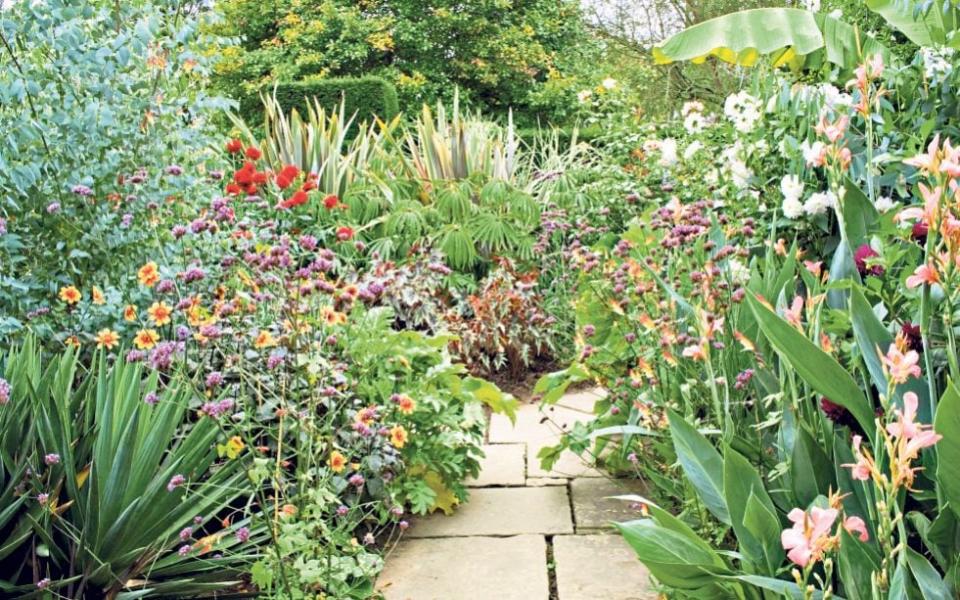
Few of us will be going anywhere exotic this year but don’t worry, I have a plan. Bring the tropics to you with an atmospheric garden full of emerald leaves and glowing flowers. For instant impact and a long season of interest, turning your garden tropical is an excellent choice.
Traditional tropical stalwarts include the hardy banana, tree fern, Chusan palm and red hot poker. As useful and lovely as these are, tropical gardens have evolved. A new trend has extended its coiled tendril to redefine the genre. In my own designs I’ve been bringing a naturalistic planting approach to tropical gardens, and using unusual new plants for greater creativity.
The natural look
I was in denial about our garden. “It’s not tropical,” I’d defiantly say to puzzled faces, until I realised one day that that was exactly what I’d created. It simply didn’t look like the tropical gardens I knew.
Our living room looks through bifold doors on to a half-sun, half-shade patio, which I’ve filled over the past six years with luxurious rarities, colourful gems to be treasured. I find that having exotic plants close to the house jolts me out of whatever head space I’m in to one of calmness through curiosity.
Employing naturalistic planting techniques – usually seen with grasses and airy perennials – while using tropical-look plants, recreates the feel of a wild jungle to wade through. I have paddle-shaped leaves of Canna ‘Shenandoah’, hardy in mild areas, pushing vertically through spreading mounds of Persicaria neofiliformis, both competing with Phytolacca ‘Laka Boom’ (possibly the greatest name in horticulture).
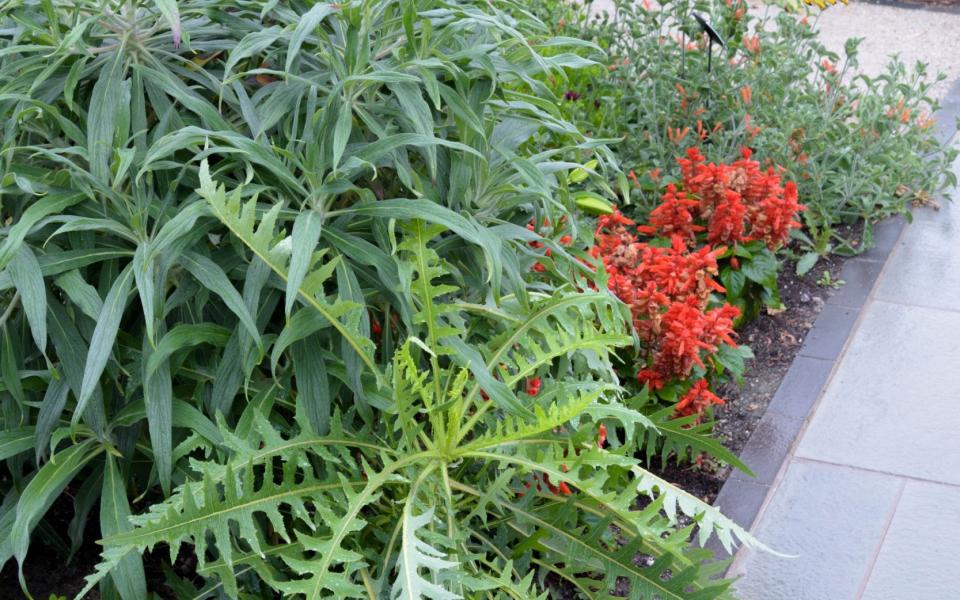
I decided early on to avoid plants most associated with the tropical look, and macheted my way past ubiquitous bamboo and gunnera. Although I love these plants I wanted a different style. So I explored a new wave of plants that are now tropical trendsetters, such as striped banana Musa sikkimensis ‘Red Tiger’ and the palmate leaves of the poisonous annual Ricinus communis ‘New Zealand Purple’.
I’m also wary of the incongruous lawn in tropical gardens, unless there is an essential need, such as children’s play. There are no lawns in rainforests and they never look right under palm trees. The lawn is a relic of Renaissance formal gardens, colonial Britain and a post-industrial lawnmower boom. Use the space for a denser jungle instead.
New colours
Tropical gardens are often stuck in a “hot border” red, yellow and orange rut – no bad thing per se, but these days there are many options. I chose a colour most people recoil from: offensive hot lipstick pink.

To this I added inky black and plum purple from the likes of tender Colocasia ‘Black Magic’ and hardy Heuchera ‘Licorice’. This moody look sits somewhere between goth and extraterrestrial. In one exotic design for a client, I’ve used only white flowers – Sissinghurst eat your heart out.
Where to start?
When discussing tropical gardens in the UK, we’re really talking about “tropical look” or subtropical plants. These plants look tropical to us – big leaves, tick, quirky flowers, tick – but they can survive outdoors in our temperate climate, at least in summer if not through the year.
I would start a tropical garden by looking at the hardiest plants first, to create structure and make your life easier. These days you can find tropical plants in all sizes for sunny and shady spots. Generally, all require fertile soil that is free-draining but moisture-retentive, the nutrients and water fuelling fast growth in summer.
The simple way to help this along is to mulch in spring with peat-free compost, such as Lakeland Gold by Dalefoot. Then use organic fertilisers on hungry plants such as bananas and cannas through summer. I use liquid seaweed and free-range chicken manure pellets. All plants can be grown in pots, too, although they will require more watering and feeding.
Begin planning your garden at the boundaries with large shrubs, trees and climbers (evergreens help in winter), aiming to clothe most of the perimeter in plants. This tricks the eye by masking where the garden begins and ends and forms a jungly backdrop for perennials and annuals.
Lows and highs
Tropical gardens can be very low or very high maintenance depending on the plants, so choose wisely. For me, the key was reducing the number of tender plants that need shelter in winter. I used to have lots, but lugging them in and out became a chore.
Instead, concentrate on plants hardy in your area (nurseries can advise on this), and limit the number of tender plants to those you just cannot be without. My must-haves include Begonia luxurians and the red banana Ensete ventricosum ‘Maurelii’, which spend winter in our living room as supersized houseplants.
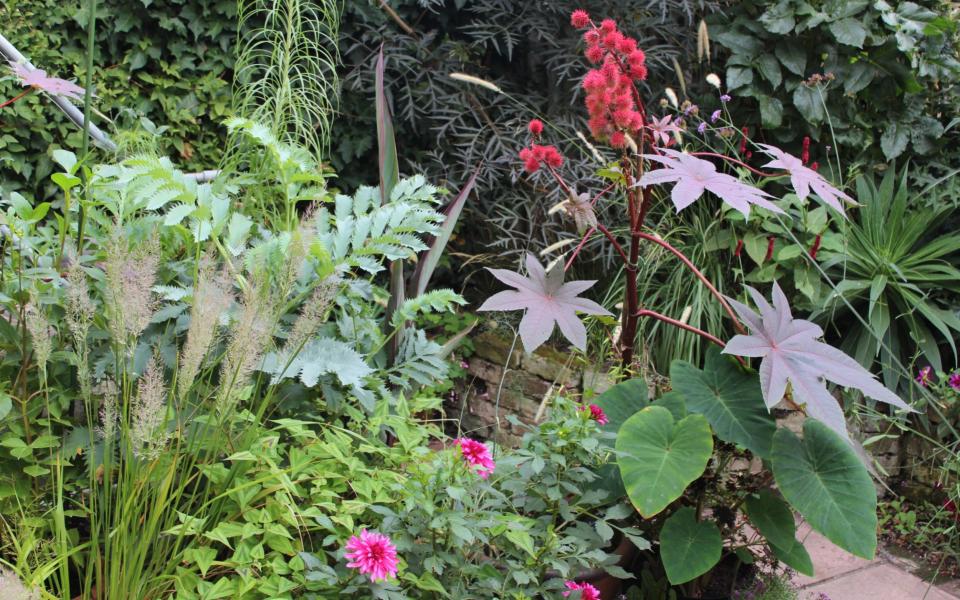
I have a love of colourful but tender Solenostemon and Begonia rex, too. Cuttings can be taken easily from these in late summer to overwinter ready for next year. However, I find you need a heated greenhouse or conservatory to raise cuttings successfully, so instead I treat these plants as annuals, and buy plugs in spring from dibleys.com.
A note on wildlife
As a conservationist, last year I almost felt compelled to compost my tropicals and fill my garden with more wildlife- friendly plants. Some tropicals, such as bananas, cannas and hummingbird-pollinated fuchsia, are only friendly to slugs here. However, I compensate by growing at least two wildlife-friendly plants for every less useful exotic.
Many such plants, even our wildflowers, can look tropical, and single- flowered ornamentals, such as dahlias, help pollinators. It’s about balance. The best way to help wildlife is to forgo insecticides – the odd nibbled leaf adds to the look.
Visit an inspiring tropical garden
Nurseries for the tropical look
10 new wave tropicals to sink your trowel into
Fatsia polycarpa
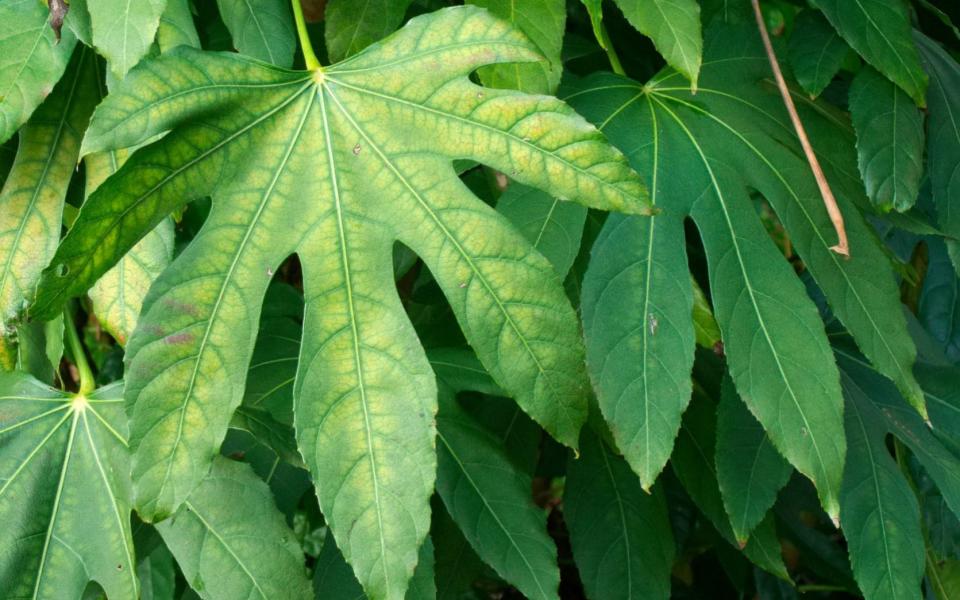
While most people will be familiar with hardy evergreen Fatsia japonica, its relative F. polycarpa (above), is that little more exotic with lighter green leaves more deeply cut. ‘Needham’s Form’, currently sold as ‘Green Fingers’, has the best form.
Salvia ‘Cerro Potosi’

Loved by bees, a number of salvias are hardy and those with rich colours work well in a tropical garden, such as cultivars of S. microcephella (above). Fairly hardy but dying back to ground level in winter are S. guaranitica cultivars ‘Amistad’ (a hybrid) and ‘Super Trouper’.
Persicaria

I have a passion for hardy persicaria and no tropical garden should be without one or 10. Most look tropical, or at least exotic, and are bombproof plants, grown for flowers or foliage.
Some of my favourites include Persicaria ‘Silver Dragon’ (above), P. amplexicaulis ‘September Spires’, great for bees with its particularly long, hot-pink flower spikes; P. neofiliformis with patterned leaves and a threaded veil of slender flowers; and P. virginiana ‘Brushstrokes’.
Fuchsia boliviana

I seem to have an eye for retro plants; Fuchsia triphylla with its slender pendent flowers must be the most beautiful of all fuchsia. It survives winter for me in central London, but must be brought inside across most of the UK.
I’m also growing the hardier, taller Fuchsia boliviana (above), with similar flowers and larger tropical leaves.
Schefflera

The Schefflera genus from east Asia is the poster plant for new wave tropicana, its many-fingered compound palmate leaves attracting lusty looks. Most popular is Schefflera taiwaniana (above) but S. rhododendrifolia and S. macrophylla are equally spectacular. Fully hardy in the UK, scheffleras form as a large evergreen shrub.
Begonia
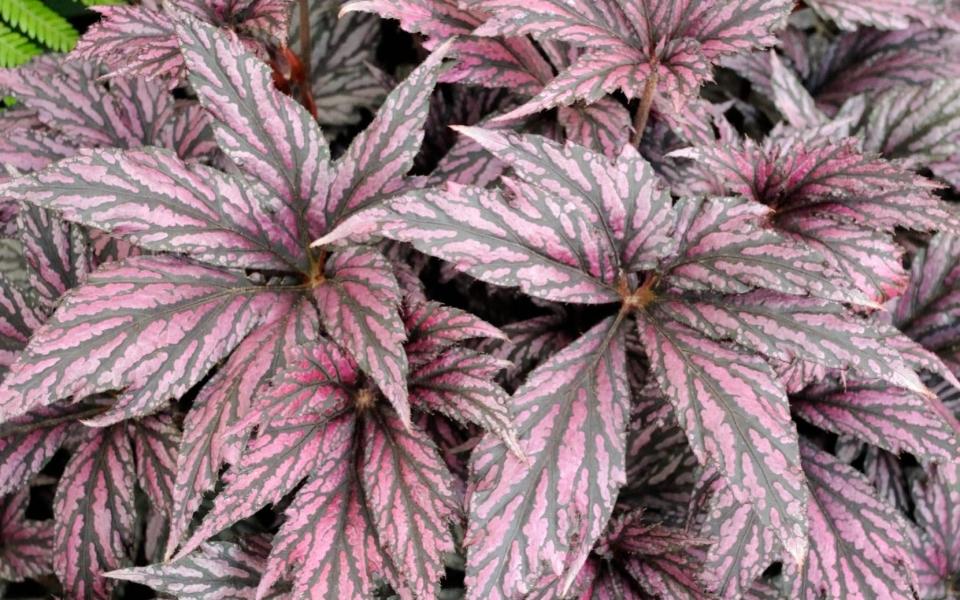
Surprisingly, some shade- loving foliage begonias are hardy to -5C (23F) in parts of the UK. I grow ‘Benitochiba’ (above), which remains evergreen in the tropics of Clapham. B. grandis dies back in winter, but springs forth in summer with luminous flowers.
Cryptomeria japonica ‘Dinger’

A hardy evergreen dwarf conifer with twisting snaked stems like Medusa. It may be surprising to hear conifers mentioned for tropical gardens, but their allure is sweeping through gardens – visit the Exotic Garden at Wisley for a masterclass.
Pseudopanax crassifolius
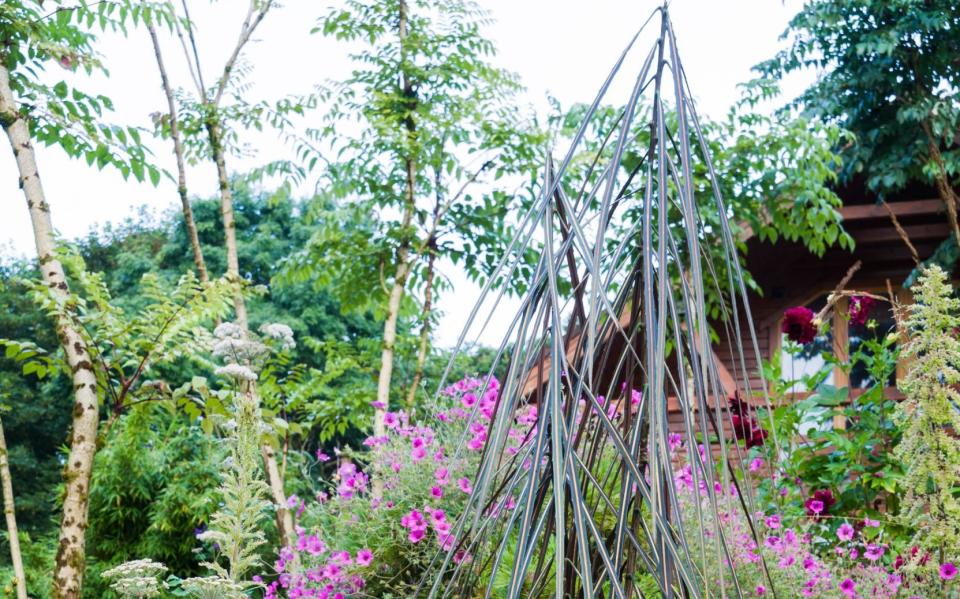
One of the strangest-looking hardy small trees, with juvenile leaves that are stiff, black and spiky, reminiscent of a chimney sweep’s brush. After a number of years, the shape of the plant changes into that of a lollipop, with more conventional leaves and bark like melted wax.
Colocasia ‘Pink China’
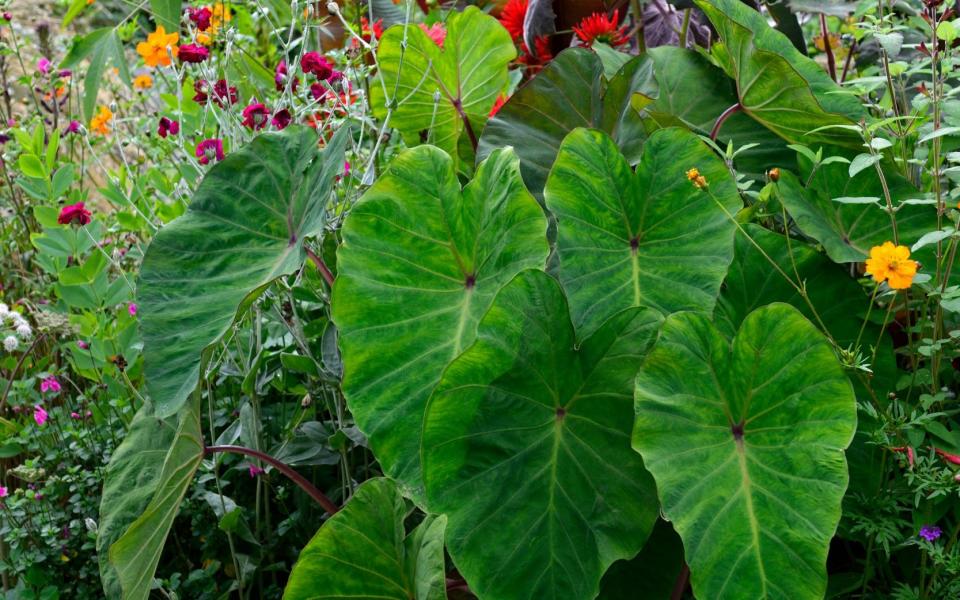
Few elephant ear plants can claim to be hardy in the UK apart from ‘Pink China’, a vigorous plant that dies back in winter.
Canna ‘Bird of Paradise’
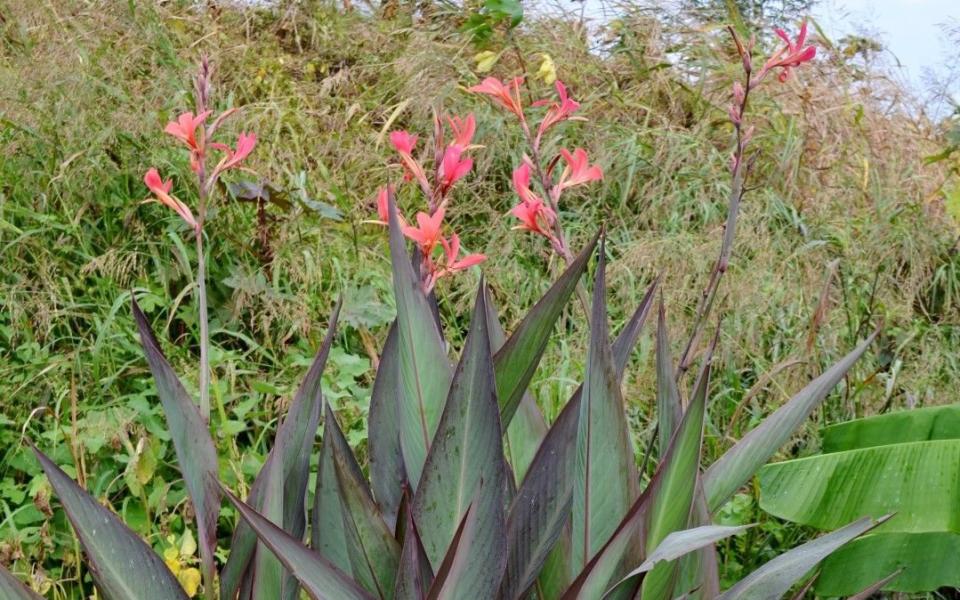
This whopper of a canna can reach up to 2m in height, with very narrow beautiful purple leaves. It’s unlikely to flower and is prone to flopping, so may need support. Cannas survive outside in mild areas, but otherwise lift rhizomes and store as you would dahlias in winter.


